What can you do to keep your clematis blooming strong all season long? When you want to add vertical interest to your property, clematis is the perfect flower for the job. It’s long winding greenery and large blooming flowers are stunning to say the least!
But for many gardeners, one of the biggest issues with clematis is that it often loses its ability to produce those big blooms as it ages.
No one likes to put a ton of work and effort into planting and growing something just to have it struggle or fail to produce. Not only is it disheartening, it can be costly if you have to start all over again with a new plant.
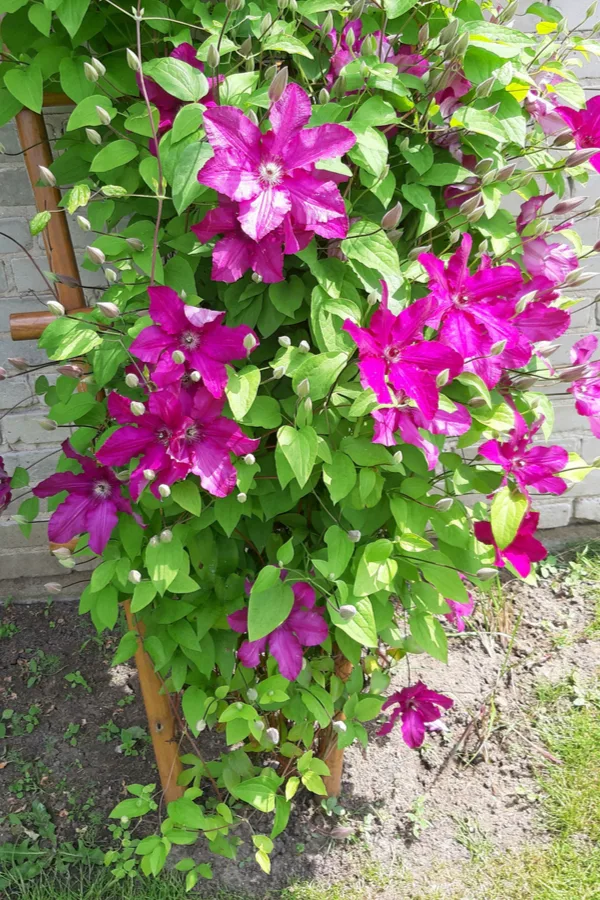
That is especially true with a perennial flower such as clematis. Some varieties are known to live for up to fifty years or more, which is all the more reason to get them off to the right start and keep them properly maintained.
One thing is for sure, a healthy, happy clematis equals a vibrant, heavily blooming plant! And today’s article is all about how to make sure your clematis is getting everything it needs to bloom big and strong every year.
A Little About Clematis
Clematis is a vining perennial that is known to be a prolific climber. They can easily attach to walls, trees, arbors, trellises and fence lines. They are the perfect addition for any growing location that needs a little addition of color, texture and height.
Clematis come in multiple varieties of bloom shapes, colors and styles. They are separated into two groups: small-flowered blooms and large-flowered blooms. Their petals can be found in shades of yellow, pink, red, purple, and white.
Some clematis varieties bloom strong in the spring while others wait until summer or even fall. In addition, there are even some varieties that are capable of flowering more than once a year.
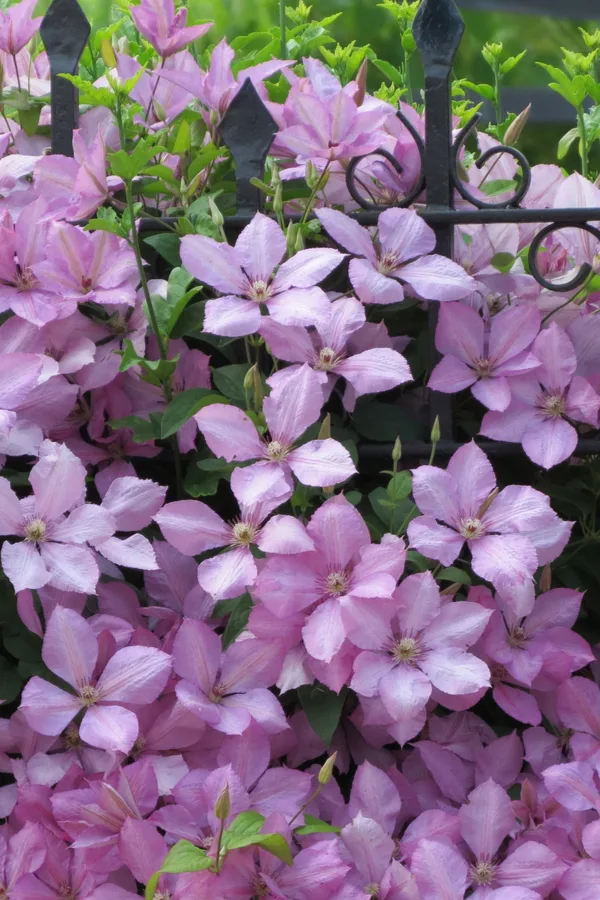
Due to their longevity, you have to be careful when choosing a growing location for clematis vines. With proper care and maintenance though, you can make sure your vines continue to provide beauty for many years of enjoyment.
How To Keep Clematis Vines Blooming Strong
It might not always be easy to figure out why your clematis flowers are struggling to bloom. However, you should be able to find the culprit by making sure the following factors are in check.
Choose The Right Variety
The first issue is one that is best discussed before your clematis plant ever goes in the ground. Believe it or not, there are over 300 varieties of clematis flowers available. So you need to make sure that you pick the right variety for your growing location and climate.
Your local garden centers should only supply varieties that can handle your local temperatures. However, you may need to do some research if you purchase your clematis online or through some other source.
Choosing the wrong variety will result in a plant that struggles to take root and flourish. Be sure to check that your specific growing zone works well for the exact variety you plan to purchase.
How Old Is Your Clematis?
The next thing to consider if your clematis isn’t producing a strong set of flowers is the age of your plant. If you just planted your clematis, keep in mind that it might take a year or two before this perennial can become established and start to produce blooms.
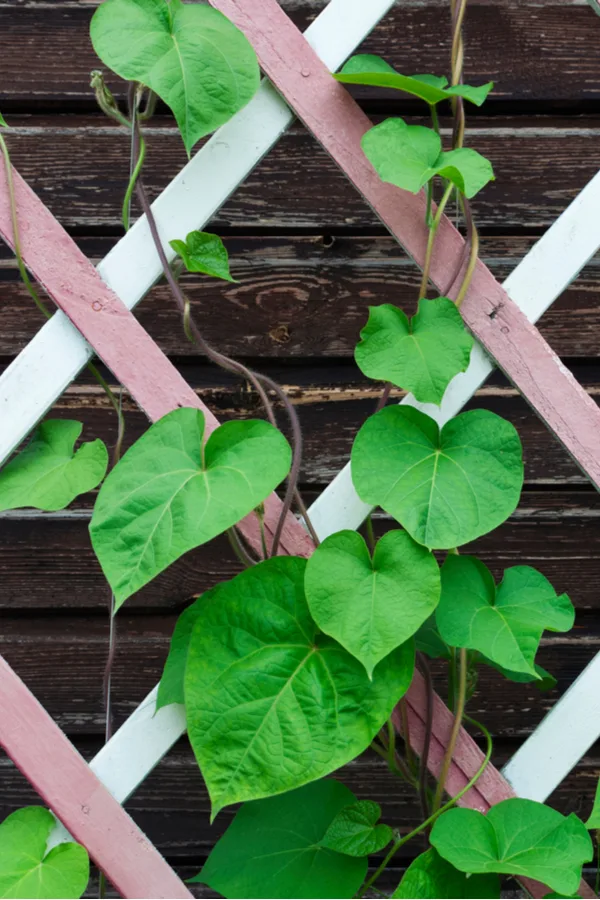
Also, consider how old your plant is. As plants age, they do indeed often start to slow down their production of vibrant blooms. While some varieties can last up to fifty years, others will often start to fade at ten to twenty years.
If your plant isn’t too old or too young, then it is most likely suffering from one or more of the following four issues:
1) Proper Sunlight – How To Keep Clematis Blooming Strong
Ensure that your growing location receives plenty of sunlight in order for your clematis flowers to bloom properly. The location needs to get at least eight hours of sunlight each day.
When choosing your location, keep the final length of the variety of clematis you are growing into consideration. A location that receives full sun at four feet off the ground may not get full sun in the same location once the vines get to be ten to twelve feet tall.
Also, watch for overhangs that might shade out the plant as it reaches its full mature height. Although clematis love sunlight, try to allow some shade on the base of the plant. Consider planting shorter perennial bushes or shrubs in front of where the vines are planted.
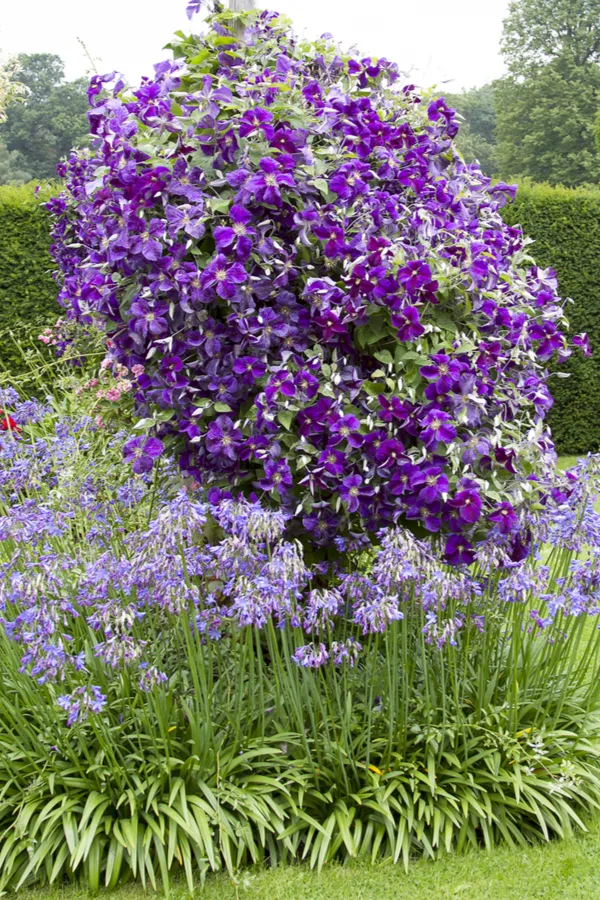
This helps to keep the roots cool while the rest of the vine still receives full sun. Options like shorter everblooming roses, hardy geraniums and Dianthus are all excellent options.
You can also use an organic mulch such as straw, shredded leaves, or even compost around the base of plant as an alternative. Just be sure to keep the material a few inches away from actually touching the stems.
2) Pruning – How To Keep Clematis Blooming Strong
Another big reason why clematis flowers fail to bloom strong is improper pruning. There are some clematis varieties that bloom on the previous year’s vines while others bloom on new vine growth.
If your variety grows off of the last year’s growth and you prune them too much, it will lead to a severe reduction in blooms. In late summer, only prune these varieties back to maintain the desired shape and to cut off any weak or damaged steams.
For varieties that bloom on the current year’s growth, prune them back to about a foot above ground early in the spring. If you are unaware of which type you have, wait until your clematis starts to bloom. Check to see if the flowers are coming off of new growth or old growth, then prune accordingly for the following year.
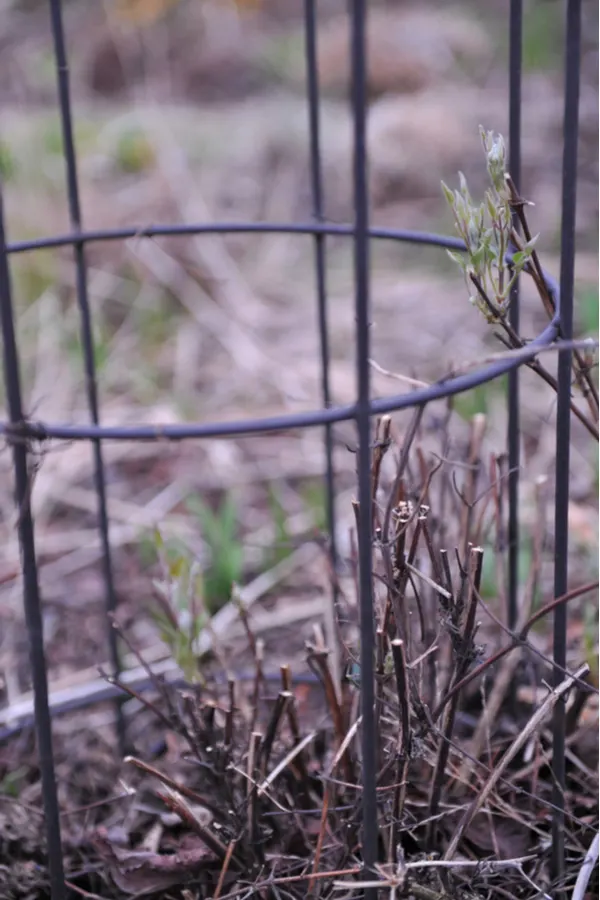
3) Water – How To Keep Clematis Blooming Strong
Water is extremely important when it comes to getting your clematis to bloom properly. The roots of a clematis plant grow deep, so proper watering will help make sure the plant gets enough water to grow and flourish.
For best results, plants should be receiving about an inch of rainwater or hand watering each week. Be sure to water plants deeply as opposed to frequently with small amounts.
This allows the water to reach the roots as well as encourages them to grow deeper. Deep roots provide vining plants with a solid, strong foundation.
4) Fertilizer – How To Keep Clematis Blooming Strong
Because clematis plants are heavy bloomers, they use up a large amount of nutrients. Without proper nutrients, a clematis plant is unlikely to bloom properly – and that is exactly where fertilizing comes into the picture.
Give your plants a good dose of all-purpose, liquid fertilizer early in the spring prior to blooming. Compost tea is another great source of natural nutrients that will work wonders with clematis. You can apply it once or twice during the growing season.
One of the biggest mistakes many gardeners make when fertilizing their clematis is to use a fertilizer that is high in nitrogen. This can cause excessive foliage and vine growth, but create little blooms. Use an all-purpose, balanced fertilizer for best results. Product Link : All Purpose Fertilizer
Here is to getting your clematis to bloom strong each and every year, and to keeping your plant healthy and strong in the process!
Follow Our Facebook Page For Even More Great Tips! Simple Garden Life Facebook Page
Simple Garden Life is a website dedicated to keeping gardening fun, simple and enjoyable! We publish two new articles each week along with a new garden podcast episode every two weeks. This article may contain affiliate links.
